How Far Have We Come, and Where Are We Going? (A Conference Report)
The following is a guest post by Merlin Chowkwanyun that originally appeared at the excellent Tropics of Meta, a blog that sells itself as “historiography for the masses.”
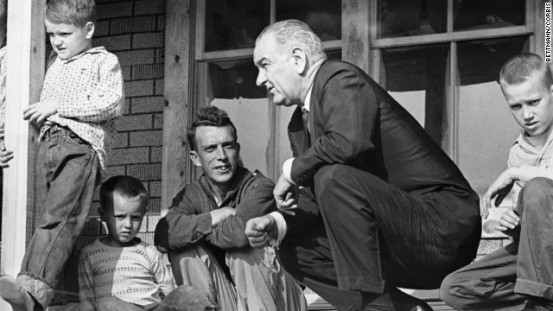
One goal of studying the past is not to be trapped by history but to transcend it.
– Historian Michael B. Katz (1939-2014)
Last week, the University of Pennsylvania hosted “The War on Poverty at 50: Its History and Legacy.” Your correspondent (Merlin) spoke at the event while furiously taking notes during all the panels to produce the write-up you have before you.
The past few years have seen a resurgence of scholarly interest in the War on Poverty: LBJ’s signature polices and programs that addressed a number of spheres, including education, nutritional, health care, and job training. This new scholarship seeks to transcend two strands of critique that have predominated writing about the War on Poverty. From the left, a common critique faulted the programs for attacking symptoms of poverty, not causes, and focusing heavily on cultivation of individual skills rather than larger-scale structural transformation of the economy. According to those on the right, the War on Poverty not only didn’t work, it did everything from increase welfare dependency to empowering hustlers who misappropriated anti-poverty funds. Two recent anthologies collect some of the best recent correctives to these critiques: Annelise Orleck and Lisa Gayle Hazirjian’s The War on Poverty: A New Grassroots History (1964-1980), and from social scientists, Martha Bailey and Sheldon Danzinger’s Legacies of the War on Poverty, a series of quantitative assessments of the programs’ efficacy and success.
The Penn conference continued this reappraisal, and Thomas Sugrue and Alice O’Connor will be editing a volume from it. Several papers highlighted positive legacies and achievements of the War on Poverty that have been largely underappreciated, or worse, quickly dismissed. Others focused on programmatic limits and other less savory aspects of the programs. But these more critical papers avoid the broad-brush, birds-eye characterizations of earlier critiques, instead examining specific domains, such as criminal justice and administrative law. Presenters had more in mind than giving the War on Poverty another black eye, and instead the talks anchored a discussion of its limits in larger questions about the post-WWII period and how we conceptualize it.
More than one panelist pointed out that a split existed between the more upbeat and more critical papers. I noticed this tension as well, but found it productive and especially appropriate for a conference held to honor the late and brilliant historian Michael B. Katz, who passed away a little more than a month ago. Throughout his career, Katz analyzed the American welfare state and social service sector’s triumphs alongside its very real limits and deficiencies. A sober and unsanitized examination of American history had to exist alongside considerations of better alternatives and how to realize them. My own view is that Katz’s later work was increasingly focused on the latter, and not being able to see how it would have developed makes his untimely passing even sadder. A couple recent essays of his worth reading on this topic are “Narratives of Failure? Historical Interpretations of Federal Urban Policy” and “Was Government the Solution or the Problem? The Role of the State in the History of American Social Policy.” (BTW, for those who have not read it, Sugrue’s comprehensive obituary of Michael B. Katz is a must-read and threads his life’s work together masterfully.)
Although the papers ranged widely — a reflection of the War on Poverty’s own unacknowledged breadth and ambition — they clustered around recurrent Katzian themes and questions, including:
*the impact of the War on Poverty in specific local contexts and domains (education, health, criminal justice, law, urban development)
* the emancipatory and repressive aspects of the welfare state
* collective political action — in the past and present — on the part of the most marginalized
* rethinking common 20th-century narratives and keywords
* how analysis of the past can inform present-day policy dilemmas and social movements
The audience, which numbered between 200-300 throughout the day, was engaged and a great mix of practitioners, academics, and the general public. Many live-tweeted the proceedings with the #WOP50 hashtag. You can read these tweets by clicking here or typing “#WOP50? into twitter and scrolling down.
A final introductory comment: Tropics of Meta has previously bemoaned the supermarket character of the big annual conferences and the erratic quality of the intellectual experience there. That wasn’t an issue here. A single track of panels helped isolate strong themes and contributed to a common conversation. Here’s to more topic-focused gatherings like this one rather than the typical giant meeting model with bogus unifying “annual theme” that few papers actually follow.
***
First Panel: Retrospective on Michael B. Katz’s The Undeserving Poor: America’s Enduring Conflict with Poverty
Peter Edelman
Ira Katznelson
Alice O’Connor
Gareth Stedman Jones
William Julius Wilson
Last year, Oxford University Press published a completely revised second edition of Dr. Katz’s The Undeserving Poor (UD). First published 25 years ago, the book is a classic in the history of social welfare and may well be Dr. Katz’s most widely-read work. (Don’t miss Katz’s own reflections on writing the new version, published at Berfois. He details major changes in his thinking — including his thoughts on the War on Poverty — and analyses that were missing from the first edition.) Boiled to its essence, the book examines the ways that policymakers, social scientists, pundits, and elites, throughout American history, have blamed poor people themselves, rather than larger economic transformations responsible for their light. The “undeserving” part of the book’s title refers to these individualistic narratives of blame and stigma.
A retrospective roundtable on UD kicked off the day’s proceedings. It featured Peter Edelman, Ira Katznelson, Gareth Stedman Jones, Alice O’Connor, and William Julius Wilson.
Edelman lauded UD‘s comprehensiveness, mentioning all the major figures and debates the book manages to cover. Among others, these included individuals (Michael Harrington, Daniel Patrick Moynihan, Charles Murray, and others); policy debates (like Nixon’s Family Assistance Plan proposal); and tropes for talking about poor people (the ways moral judgments and notions of biological inferiority have persisted). Edelman discussed the conservative political shift of the past few decades and how timely Katz’s book remained, at one point mentioning the notorious secret video where Mitt Romney characterized 47% of the population as freeloaders who would vote for President Obama so they could continue receiving handouts.
Katznelson spoke next and zeroed in on UD‘s preface, which for him captured major tenets of both the book and Katz’s way thinking. UD, Katznelson declared, was a book with a purpose: to enlighten readers about the persistence of poverty, its complexity, and how ideas and history can determine which choices we make to attack the problem. Katznelson first focused on complexity and choice. Choices, he argued, are bets with probabilities that policymakers must make. If he were to critique Katz’s treatment of choice, Katznelson continued, he would ask Katz to draw a sharper distinction between picking on one hand and opting and choosing on the other: the former a more indifferent and less consequential act (like picking a tomato at a supermarket), the latter a more invested judgment made from values, preferences, and deliberation about risks. The New Deal, Great Society/War on Poverty era, and the conservative revolution were all moments of key opting decisions that affected the subsequent policy possibilities that UD explores. (Katznelson adapted the picking/choosing distinction to UD and public policy from a really hard essay by Edna Ullmann-Margalit and Sidney Morgenbesser, available here) I took Katznelson’s comment to be an expression of the classic “by design” versus “by default” problem. To what extent are developments in the welfare state the result of constraints bequeathed to us and to what extent are they positive byproducts of concerted and intentional action?
Katznelson then turned to the role of ideas and how they shape our collective “dispositions” towards poverty. As would several other panelists, he mentioned Katz’s role as the archivist/historian for the Social Science Research Council (SSRC)’s Committee for Research on the Urban Underclass, a research project spurred by William Julius Wison’s The Truly Disadvantaged (1987) and launched in the late 1980s. The role of historians like Katz, Katznelson pointed out, was to keep rarefied social science organizations like the SSRC “honest” and to help them think about ways to deploy their considerable resources and influence in fruitful ways. (Katz’s own criticisms of the SSRC “underclass” project can be found in the introduction to The “Underclass” Debate: Views from History, a now-classic anthology of historical interventions in urban poverty debates that he edited.) Katznelson concluded by pointing out that new poverty figures released earlier this month barely merited a mention in the press: a sign of how marginalized poverty (or at least talking about it with that word) has become in mainstream circles and how the flow of ideas can very much affect subsequent action taken (or not taken) on an issue like poverty.
Alice O’Connor, author of Poverty Knowledge, the most comprehensive intellectual history we have of how social scientists and policymakers have debated poverty, opened on a biographical note by talking about how she first met Katz. While employed at the Ford Foundation, she had read a New York Times letter to the editor by Katz that read in part:
Despite what he [original author] says, and what others have tried unsuccessfully to prove for more than a century and a half, no evidence shows that people prefer handouts to work, as long as it is neither degrading nor exploitative.
No, the reasons workfare doesn’t work lie neither in our compassion nor in the indolence of the poor. They are rooted, rather, in the structural contradictions that undercut work relief in America’s political economy and in the unwillingness of Americans to sanction welfare reform other than as a euphemism for cutting taxes.
The letter, which you can read in full here, was in response to a column that predicted the eventual failure of novel workfare experiments of the 1980s because of a historic American “compassion” that would eventually find it too punitive and undercut it. (So much for that call.)
For O’Connor, this letter and Katz’s body of work (especially UD), showed how history could not just explicate things that happened but could re-frame debates and counter mythic historical narratives. Like Katznelson, she praised Katz for recognizing the power of ideology, values, and ideas in shaping our policy discussion. O’Connor finished by talking about the differences between the first and second editions of UD, particularly Katz’s more optimistic assessments of the War on Poverty and its “community action” programs. O’Connor mentioned that the research of Katz’s graduate students into untapped aspects of the War on Poverty had changed the University of Pennsylvania professor’s own views.
Gareth Stedman Jones, the great British social and intellectual historian — and author of the classic Outcast London (one of Katz’s favorite books of all time) — commended UD for its ability to straddle passion with fair-mindedness and avoidance of easy polemic. Stedman Jones joined Katznelson and O’Connor in mentioning the role that historians could play in checking social scientists. Ideas that seem great and faddish at the time, Stedman Jones noted, now seem “grotesque.” (In the age of genome sequence, this is an insight today’s social scientists would be wise to heed.)
Stedman Jones then discussed the transformation of London in the post-Thatcher era and the city’s rapid reversal away from a mid-century “social reciprocity.” (For those of us in the United States, what’s happening in Manhattan and Brooklyn is a similar tale.) Casual and surplus labor, a central “problem” debated by various figures in Outcast London, has been on the rise in London. In many ways, this inequality and deprivation, juxtaposed with the speculative activity of financial firms and sovereign wealth funds, brought to mind the London of Outcast London rather than the mid-century version. He closed, however, on an optimistic note, stressing the success of “living wage” campaigns in England and resistance there to anti-immigrant sentiment.
Finally, William Julius Wilson looked at Katz’s chapter in the new edition of the UD entitled “The Rise and Fall of the “Underclass.”” But sloppy and “nonsystematic” use of the “underclass” term by journalists to stereotype poor people’s supposedly bad work ethic gave the term too much ideological baggage. Wilson discussed his own usage of the term and the reasons why he backed away from it, eventually substituting “ghetto poor.” Wilson stressed that the academic research program and theoretical questions of the “underclass” research program remained important — understanding, that is, what happens when labor markets are disrupted and residents spatially isolated from social networks and resources vital to gaining employment and economic security. The American Sociological Association Presidential Address by Wilson, available here, elaborates on this issue further.
Maximum Feasible Participation: Community, Poverty, and Policy
Gretchen Aguiar: “Maximum Feasible Employment: Head Start Jobs and the War on Poverty”
Merlin Chowkwanyun:”Beyond Medicare and Medicaid: The War on Poverty and Health Reform”
Crystal Sanders: “More than Cookies and Crayons: Head Start and the Black Freedom Struggle in Mississippi.”
Comment: Dorothy Roberts
The next panel consisted of younger scholars presenting research on specific War on Poverty era programs. These papers focused on the upsides of the War on Poverty. (One conference attendee quipped later that this was the “optimistic panel.” Many attendees discussed how one should reconcile the overall positive appraisal of the War on Poverty from this panel with the one that followed.)
Gretchen Aguiar, a former student of Dr. Katz, was the first to present. She shared her work on Head Start — the famous early childhood education program, still in existence — and its dual functions. In the early stages of her research, Aguiar recounted, Katz had asked her whether there was any mention in the archival sources of Head Start functioning as a “hidden jobs program.” Subsequent research trips by Aguiar revealed that there indeed was. Employment for poor people was always a central parallel goal of Head Start. Previous writing on the War on Poverty chides it for supposedly limited strides towards larger-scale job creation and largely focuses on endeavors targeted at males. Aguiar’s account challenges these views, for Head Start offered new pathways out of poverty for thousands of women, something it continues to do today.
Aguiar situated Head Start within a debate about the root causes of poverty: one camp points to individual characteristics of the poor, and another points to the labor market and lack of jobs. She discussed Frank Riessman, the intellectual architect of the “new careers movement,” which sought to create meaningful jobs while simultaneously training workers for them and hiring people who had “seen poverty from inside.” Aguiar ended by discussing the “maximum feasible participation” requirements of the War on Poverty’s Community Action Programs (CAP) and its emphasis on ensuring representative governance from the people it served. CAP, in the end, wasn’t the WPA and the War on Poverty not the New Deal, but their roles in job creation were too considerable to be dismissed as easily they have by prior scholars. (Readers of Katz’s new edition of UD will find that Aguiar’s research plays a considerable part in reshaping his thinking on the topic.)
Crystal Sanders then presented on the Child Development Group of Mississippi (CDGM), one of the most high-profile of the Head Start programs. Despite this visibility at the time, however, CDGM has mostly been relegated to extended cameos in the major histories of the civil rights movement, and Sanders’s forthcoming book will be the first to give it the extended attention that it deserves. Sanders’s paper complemented Aguiar’s well, underscoring the latter’s point about Head Start’s multiple roles: education, job creation, social service delivery, political education. CDGM employed not only teachers but also other support staff at the school (such as cooks). And beyond education itself, it offered basic dental, TB, vision screening and immunization. Sanders’ work also examined some of the CDGM in-class activities, where Head Start children were taught deliberative techniques and critical thinking skills early on. If student curiosity was cultivated at an early age, CDGM figures thought, they would be less inclined to uncritically accept white power. (The title of Sanders’s paper comes from an exercise where students debated and voted on what color crayons they would use.)
Throughout its existence, CDGM faced political repression and white resistance from the start, and CDGM employees always faced informal vigilante reprisal. Later backlash against CDGM came from more formal political channels. Sanders detailed Mississippi Senator John Stennis’s attempts to investigate the group for minor bookkeeping irregularities, which eventually led to the end of the program after the Office of Economic Opportunity — the main granting agency for local War on Poverty programs — pulled the plug. This part of the paper made me think about how discussions of the War on Poverty’s shortcomings need to be contextualized, in this case alongside active efforts to undermine the programs from the very start.
Merlin Chowkwanyun was last and discussed the War on Poverty and health reform. Most accounts of War on Poverty era health reform tend to focus on Medicare and Medicaid but neglect on-the-ground analysis of the institutions where much of this new funding actually flowed. Chowkwanyun tried to restore this dimension through an examination of the Watts (Los Angeles) and Hough (Cleveland) riots in the mid-1960s. In the riots’ wake, officials created new post-riot health care infrastructure, in part to quell discontent of residents living in the two cities’ most economically marginalized and segregated areas. The fortunes of the new facilities were mixed. They faced budgetary shortfalls, especially after the 1970s recession, along with battles over how much input the broader “community” would have in running them. They also did not always address the other root causes of poor health status that did not have anything to do directly with medical care access (such as housing or food insecurity).
Despite these limits, Chowkwanyun concluded by turning to the present and highlighting the vital roles of facilities like those he studied — both for delivering health care and for job creation, to name just two. The War on Poverty era also ushered in a huge zeitgeist change when it came to relations between strongholds of elite medicine in central cities and the residents who lived around them. Today, these institutions at least have to pretend to care about people outside their borders, though how often this translates into real programs varies.
In her commentary, Dorothy Roberts tied the papers together and discussed her ongoing research on the present-day child welfare system. The punitive nature of today’s child welfare system — run by remote administrators with misguided perceptions of parents — served as a foil to the programs discussed by the panelists. The historical subjects in all three of the cases above were intimately familiar with the people they served, something that becomes clear when one studies the War on Poverty at the local, granular scale.
Roberts pointed out that the programs discussed by the three panelists, sometimes implicitly, sometimes explicitly, assumed structural causes for systemic poverty and focused on institution-building to alleviate it, all while making participants in the program active collective agents in the policy solutions to their problems. This stands again in sharp contrast to the programs she has been studying, with their excess focus on blaming parents rather than alleviating the economic situation that makes raising their children so difficult. Roberts’s remarks made me think about how many criticisms (mostly from the left) focus on the War on Poverty’s assumptions regarding “cultural deficiency” and “damage” of the poor require more nuance. This element was always there but often existed simultaneously with other ways of thinking about poverty’s root causes. Moreover, participants in programs developed their own narratives about why poverty’s existed, distinct from what the formal planners of the programs themselves thought.
The War on Poverty’s Neoliberal Legacies
Sophia Lee, moderator of the second panel, prepared audiences for a tonal shift in the afternoon panels. Whereas the papers in Panel #1 accentuated the redeeming qualities of the War on Poverty, those in Panel #2 examined some of its intended and unintended undersides: specifically, planting the seeds for 21st-century gentrification; providing legal doctrine and bureaucratic machinery that buttressed incipient neoliberalism; and aiding the growth of the carceral state.
Whoa, what?! Your correspondent admits that when he first saw the paper titles for Panel #2, he worried about coming off as a milquetoast liberal dope with his mostly positive paper. But by the end of the panel, he became more at ease with holding two interpretations in his head at the same time. Policymaking in the War on Poverty was a messy and multi-layered thing. Better to interpret it in all its dimensions than just one. (More on this later.)
Brian Purnell was up first with an account of community development corporations (CDC). His current project centers on three cases: the Bedford-Stuyvesant Restoration Corporation (Brooklyn, see here for his 2014 AHA presentation), the Watts Labor Community Action Committee (Los Angeles), and the Zion Charitable Trust (Philadelphia). The overarching story Purnell told was one of expansive vision steadily narrowing by the 1980s, when many CDCs not only did less to alleviate poverty but may even have been complicit in aiding some of the forces that contributed to it. The Bed-Study case illustrates this trajectory very dramatically. In its early years, the Bedford-Stuyvesant Restoration Corporation redeveloped abandoned space, created long-standing neighborhood institutions, and implemented a “home improvement program” that rehabilitated residents’ houses. Nowadays, however, the organization’s activities cater to the affluent, including newcomers with few roots in the neighborhood at all. (Purnell showed some ads for “affordable” apartments in the area that were in the mid-to-high six figures.) These ads make you ask: “Community development” for which community now?
When he discussed the Watts Labor Community Action Committee and Zion Charitable Trust, Purnell focused on the two organizations’ leaders, Ted Watkins and the Rev. Leon Sullivan. Watkins, a major figure in the UAW local and civil rights organizations in Los Angeles, leveraged his connections to fund job-training programs and social services for the area. Sullivan pooled money through a “$10 over 36 months” pledge, with the funds used to invest in various commercial endeavors, including an apartment building in an all-white neighborhood. After the conference, one attendee noted that Watkins highlights the need for organized labor to be better integrated into War on Poverty scholarship. Sullivan, meanwhile, shows links between anti-poverty efforts and “black capitalism” ideology. Purnell’s project will tell us a lot about the directions and consequences of these connections, for better or worse.
Next, Karen Tani analyzed the legal edifice of neoliberalism: a broad term scholars have been using to capture a number of confluent new trends: retrenchment of the state in social welfare provision; paradoxical use of the state apparatus to further private interests; private entities’ incursion into traditionally public domains; an increasingly punitive state; and above all, the hardening of individualist, dog-eat-dog, every person for himself/herself ideology. Unfortunately, much of the writing on neoliberalism tends to be written in highly abstruse Marxologese and up in the clouds. Only recently have historians started to bring some concreteness to ethereal theorizing.
Tani does so via an examine of three influential federal cases. Her twist? All three of the cases originated not from conservative counter-revolutionaries but welfare rights advocates. The first, King vs. Smith, divorced sexual behavior regulations, many heretofore imposed by state and local agencies, from welfare benefits. The second, Shapiro vs. Thompson, invalidated state residency requirements and held that “citizens of the nation” had the right to travel. The third, Goldberg vs. Kelly, recognized welfare benefits as “new property” and therefore subject to pre-evidentary hearings and due process when it came to possible termination of benefits. The intellectual basis for the case rested heavily on Charles Reich’s influential 1964 law review article, “The New Property.“
In the short term, these cases were major legal victories for welfare rights advocates. But they also thinned out the power of state and local governments when it came to social welfare provision and strengthened the centralized federal apparatus. On one hand, this transfer of power could prevent local and state officials from imposing arbitrary barriers to welfare benefits. On the other hand, putting much more welfare authority in the hands of the federal government made it easier for proponents of neoliberal policy to enact their ideas in a much more coordinated, large-scale way. The 1996 federal welfare reform legislation, mentioned by Tani at the start, comes to mind here. It did far more in a single swoop than a bunch of scattered local and state-level welfare agencies ever could. Strengthening due process, meanwhile, may have taken away power from arbitrary decision-making of mid-level administrators, but it also makes the benefit less of a straight entitlement and something that can be potentially be denied. As Tani put it, “You lost your welfare benefits? You can’t complain if you were treated just like everyone else and had a chance to contest the decision. Fair is fair.” If the neoliberal imagination is one in which everybody is an atomistic agent defending his or her property, it’s not hard to see how treating welfare rights as property rights — even ones protected by due process — can lead one down an unanticipated neoliberal road.
Tani’s paper makes us rethink seriously the hard boundary we have placed between the rise of conservatism and the New Deal/Great Society era that preceded it. Unwittingly, actors in the former may have created bureaucratic forms that aided the subsequent neoliberal/conservative ascendance. Tani made for a nice transition to the last speaker, Heather Ann Thompson, a leader in shaping our understanding of mass incarceration and the “carceral state’s” depressing rise in the past 40 decades. (Thompson recently lent her expertise to a National Academy of Sciences’s report on the topic, available here.)
Thompson’s paper surveyed recent work, including her own, on the simultaneous, rather than sequential, rise of the liberal welfare state and the carceral state together. The 1960s welfare state often relied on policing to deliver services (or to oversee the spaces where those services were delivered). Many social welfare programs also depended on law enforcement dollars. Earlier left critics of the welfare state have made this point but in far narrower terms, mainly focusing on moralism in welfare benefit restrictions. Like Tani, Thompson’s argument, by contrast, encourages us to let go of easy one-stage-two narratives of liberal decline followed by conservative ascendance. Properties we associate with the latter may instead have far been more intrinsic to capitalist welfare states than many liberals (then and now) would like to think. Regular readers of the news will find a lot to agree with in Thompson’s argument. In the same week she delivered her paper, many reports circulated of school districts armed with military machinery, like Los Angeles Unified and this tank. Schools and other social welfare institutions have also long functioned as sites of surveillance and policing of subjects, particularly the poor. But Thompson’s analysis does not mean one should feel automatically despondent about the state as instrument for change. As she was very careful to emphasize, if we are going to launch another War on Poverty, better to know about the deficiencies and punitive aspects of prior efforts so as not to replicate them the next time round.
Amy Offner’s comment on the panel continued the discussion of how to reframe the ways we talk about the post-WWII era. She drew attention to three key questions all the papers raised:
- What properties distinguished mid- and late-century welfare states? What changed and what stayed the same?
- What aspects of the War on Poverty were appropriated — intentionally or unintentionally — by later actors, especially those antagonistic to its goals?
- What is the role of markets and their relation to the welfare state? How has the welfare state both insulated subjects from markets and accelerated their reliance on them?
These questions led to what was, in my view and many others, one of the most provocative comments of the entire event. Offner suggested that as analysts, we might do well to think of “liberal” as a term of the time and an actor’s keyword, rather than a static one with durable and obvious timeless characteristics. This is even more convincing in an international context, where liberalism was inextricably linked with militarism, imperialism, and developmentalism, to name just three ideological and policy programs. (Offner herself has done comparative work examining anti-poverty programs in the United States and Colombia.)
Having been rightfully dinged earlier in the year for my own loose use of “liberalism,” I found Offner’s call very persuasive, though I wondered what we should substitute for “liberalism” instead. (At some point, as a writer, you do just have to pick a category and run with it, despite all the imprecision and elasticity it contains) I asked Offner after the conference what she thought, and she suggested actually using terms that more explicitly conveyed what particular policies or initiatives set out to do. So if we are writing about redistributing economic resources, use “redistributionist;” if a group of people is discussing how to spur economic development, “developmentalist.” Sounds like a good prescription to me.
The Fifty Years’ War: Poverty and Policy in an Age of Inequality
Felicia Kornbluh: “Wars on Poverty, Wars on Welfare”
Annelise Orleck: “Rethinking the War on Poverty in A New Age of Inequality: What’s History Got to Do With Policy?”
Comment: Greg Kaufmann
Participants in the last panel connected the War on Poverty to more recent and ongoing political developments. Felicia Kornbluh began by calling attention to the contract campaign of the University of Vermont faculty union. Her presentation then focused on internal fissures within the Democratic Party. Up to the final moment of President Clinton’s signature on the 1996 welfare reform bill, sizeable factions of Democrats in both houses, Kornbluh pointed out, were opposed. This rupture within the party continues to the present, even after the Democratic recapture of the White House in 2008. Further, one can trace this fissure within the Democratic Party back to the passage of the Civil Rights Act and Economic Opportunity Act of 1964.
For me, Kornbluh’s presentation was a useful reminder that the well-monied and powerful institutions that are political parties remain very consequential and important. A rise-fall narrative of mid-century liberalism and Republican ascendance may not be adequate, but who can discount the importance realignment between and within political parties? One only needs to look (again) at the 1996 welfare reform discourse to see how consequential these dynamics are. Your correspondent’s own take is that historians have tended to cede careful microscopic study of party dynamics, elections, Congress, and the executive office to political scientists, who then often interpret them in astounding reductive and dull ways. Kornbluh’s paper made me realize that maybe it’s time we historians think about how to re-integrate this top-down aspect of political history back into our work, particularly for those of us who spend a lot of time thinking about grassroots politics and social movements that try to influence the state.
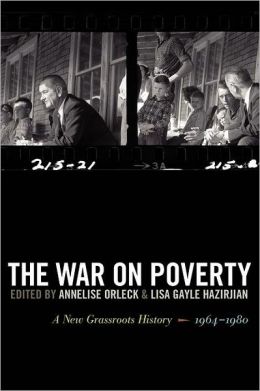
Annelise Orleck, co-editor of the pathbreaking War on Poverty anthology mentioned above, commented on the perceived tonal tension between the two panels and said that it actually reflects a long-standing feature of the welfare state. As a recent book by one of the morning speakers demonstrated, the New Deal grew alongside a parallel expansion of the national security state, just as the War on Poverty played out alongside developments discussed by scholars in panel #2. Orleck’s comments reminded me how the historiographic pendulum periodically swings when it comes to assessments and judgments of the Progressive Era, the New Deal, and the Great Society/War on Poverty, the three major periods of epoch-making policymaking in the 20th century. (Recently, the Progressive Era and Great Society/War on Poverty have been doing better, the New Deal less so.) Neither interpretation is flat-out right or wrong, Orleck said, and it called to mind Michael Katz’s reminder in Improving Poor People that studying the history of policy means making peace with contradiction and paradox.
Orleck devoted the rest of her talk to promising developments of the present, including the $15 minimum wage campaigns in many cities, the most successful in Seattle, and emphasized the need to make organized labor a more central agent in future efforts to combat poverty. (As I write this, the Los Angeles city council has just passed — and the Mayor vowed to sign — a bill guaranteeing a similar living wage for the city’s underpaid hotel workers.) While the word “poverty” has become a stigmatized phrase best avoided by most politicos, “inequality” has not: the increasing use of “1%/99%” language and the public reception of Thomas Piketty’s Capital in the Twenty-First Century just two of many examples. Meanwhile, the Earned Income Tax Credit, while divorced from more concerted efforts at federal job creation, attracts bipartisan support. There might be something to build from. The obstacles are steep, however. Recent travesties like Hurricane Katrina were potential windows of opportunity to highlight systematic deprivation and the potential of public policy to counteract it — but narratives about the War on Poverty’s failure continue to hold sway. (More than one participant at the conference mentioned Paul Ryan’s regular use of the War on Poverty as a rhetorical punching bag to beat up on government intervention.)
The Center for American Progress’s Greg Kaufman ended the conference. Before his current position, Kaufman filed regular reports on poverty for The Nation. He currently runs talkpoverty.org, an excellent resource for both data and firsthand, front-lines reporting on anti-poverty efforts. Kaufman spoke about the need to disseminate academic findings more broadly. Many (most?) people have no idea what exactly 1996 welfare reform did or understand what benefit levels are for various programs and how much they can make a difference in people’s lives. Cuts to the food stamp program are the most recent example, and Kaufman lamented how poorly most Democrats defended the program and explained it to constituents.
The conference itself heeded Kaufman’s call for better dissemination of findings and insights by scholars. Its organizers did an excellent job of bringing in non-historians and non-academics. This is something that would have no doubt brought a smile to Dr. Katz’s face, for he spent much of his time engaging people outside the historical profession. As anyone who has hung around historians a lot knows, they often exhibit a lot of existential angst over whether studying things from the past matters to anyone living and trying to survive through the difficult present. The first step to getting over said angst are meetings like this one, where historians are forced to engage and present to audiences outside of their disciplinary silos.
This conference report opened with a quotation of Dr. Katz’s that more than one person has invoked in the weeks after his passing. So let me close with another that I think captures the multiple chords struck at the conference and the need to develop an unromantic and honest view of the past, all while thinking about ways to chart a better future. Discussing a group of Progressive Era thinkers whose limits in vision he unsparingly details, Katz ends on a different note by writing: “For Devine, Brandt, and others, poverty was also a seventh kind of problem — a problem of pessimism, which they were determined to overcome. To make real progress, we need to recapture their energy and their faith.” At a time when cynical political fatalism and doomsday posturing can be tempting, this alternate course seems a much more constructive long-term prospect, and I was proud to be at a conference with scholars and attendees who opted for it instead.
Merlin Chowkwanyun is a public health historian and also an expert on Pau Gasol and the Lakers.


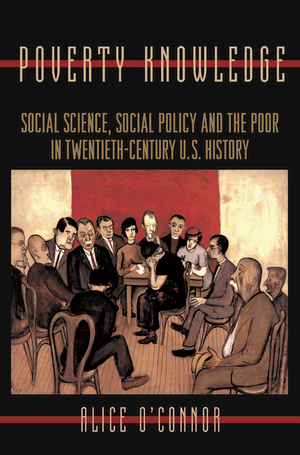
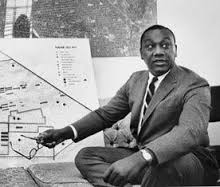
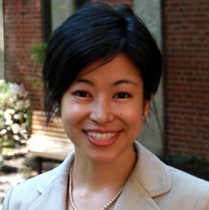
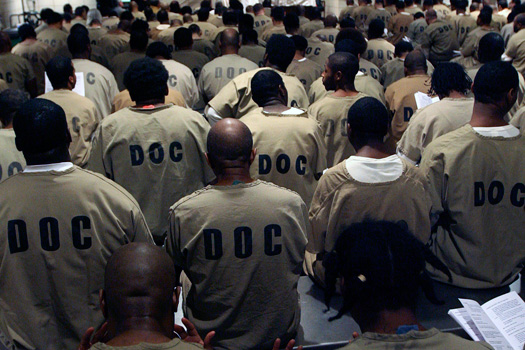
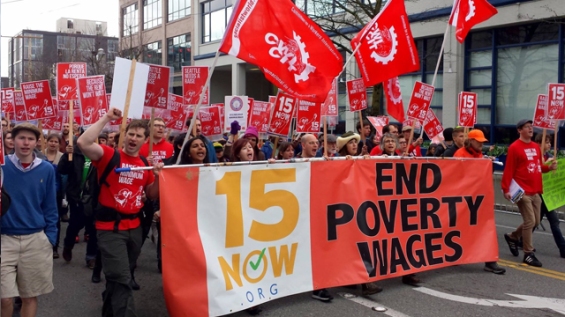
One Thought on this Post
S-USIH Comment Policy
We ask that those who participate in the discussions generated in the Comments section do so with the same decorum as they would in any other academic setting or context. Since the USIH bloggers write under our real names, we would prefer that our commenters also identify themselves by their real name. As our primary goal is to stimulate and engage in fruitful and productive discussion, ad hominem attacks (personal or professional), unnecessary insults, and/or mean-spiritedness have no place in the USIH Blog’s Comments section. Therefore, we reserve the right to remove any comments that contain any of the above and/or are not intended to further the discussion of the topic of the post. We welcome suggestions for corrections to any of our posts. As the official blog of the Society of US Intellectual History, we hope to foster a diverse community of scholars and readers who engage with one another in discussions of US intellectual history, broadly understood.
Merlin, thanks so much for this. Really extraordinarily useful and sweeping.